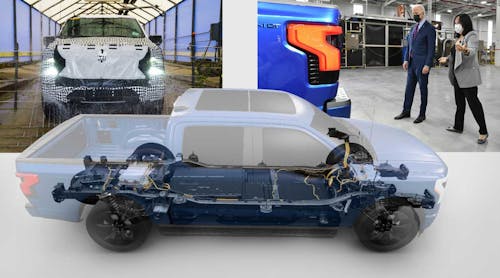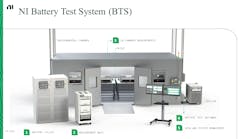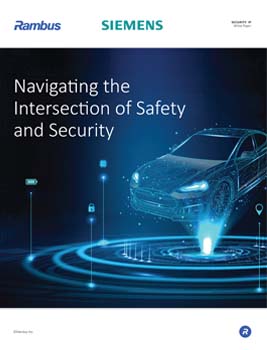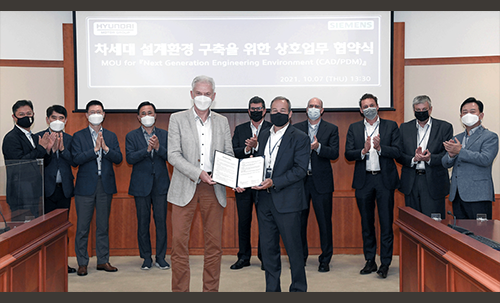This article is part of the2022 Electronic Design Forecastissue
What you'll learn:
- What will be the main components driving the advanced air mobility (AAM) market?
- Electric-vehicle charging innovation spreading to the eVTOL space.
- Steps toward building out an AAM ecosystem.
With a number of new innovations in airborne mobility on the horizon, air travel will continue to undergo significant changes in the coming year—and beyond. As 2022 unfolds, we’ll see new kinds of air mobility take flight in multiple directions.
The Air Mobility Revolution
We all know that mobility is undergoing a total overhaul on the ground with the rise of electric vehicles, electric bikes, ridesharing, scooters, and more. But in the coming years, the advanced air mobility (AAM) market is set to take off as well, with a number of new consumer options in the sky that will cater to the needs of individuals. Some examples of people-focused AAM innovations include:
- Personal vehicles:Like electric bikes and scooters, so too will air mobility offer similar personalized options. Small flying electric vehicles, technically known aspersonal eVTOLs (electric vertical-takeoff-landing), and even air motorcycles are no longer restricted to science fiction, as they begin to show up at a product level. Longer-range, personal vehicles for daily commutes and leisurely weekend use also are trickling into the market.
- Air taxis:Despite last year’s decline in automotive travel in the wake of COVID-19, the average American still spent an average of26 hourssitting in traffic congestion. Though still a ways away from coming to fruition, air taxis are projected to reduce travel times between3-13%, making them an appealing alternative to public transportation for urban commutes.
- Drone delivery:Delivery by drone is emerging, making last-mile fulfillment of food and goods significantly faster, cheaper, easier. and greener, while helping unclog our congested roads from delivery trucks and scooters. It demonstrates the everyday tangible benefits of increased aerospace utilization right now.
The Adoption of Electric Tech in Aerospace
As EVs become more popular, the need for additional charging stations on our roads aimed at allowing limitless range will quickly escalate. In fact, EV charging is projected to grow into a$1.6 trillionmarket in the coming years.
But it’s not just electric cars that will benefit. The eVTOL market will profit in turn as many personal aircraft will be designed to use the same charging infrastructure as ground automobiles. Similarly, materials, concepts, and components used in EVs—e.g., batteries, motors, and other mature components—will contribute tremendously toward reducing the number of steps needed to migrate and implement electric air mobility
And it’s not only smaller aerial devices that will benefit from this electrifying shift. Commercial aircraft manufacturers, such as Boeing, have already begun implementing newly electrified components like theelectric environmental control(aka “No-Bleed”) system that eliminates traditional pneumatic systems. By embracing such electric systems, airlines have the potential to cut2-3%of fuel burn costs, saving massive amounts of money while reducing harmful emissions.
Building a Collaborative Ecosystem to Advance Air Mobility
The AAM industry has already garnered over$11 billionin investments. But to transcend its R&D phase and really take off, private enterprises and public entities must work together to advance societal acceptance for such personal air transport and aeronautic technology. Fortunately for the AAM market, this is already underway.
对example, NASA’sdeclared visionfor the AAM industry is “…to help emerging aviation markets safely develop an air transportation system that moves people and cargo between places previously not served or underserved by aviation—local, regional, intraregional, urban—using revolutionary new aircraft that are only just now becoming possible.”
The U.S. House of Representatives also recently passed theAdvanced Air Mobility Coordination and Leadership Actin an effort to promote the advancement of the entire industry. Such government support alongside private innovation will prove to be crucial not only for getting such a disruptive industry off the ground, but also for winning the public’s trust.
The Sky’s the Limit
The special, test eVTOL “vertiports” specifically created for flying vehicles, which are popping up in airports and cities around the world, are a testament to the fact that such flying machines are no longer pie in the sky. The same can be said of drone delivery, which is being swiftly adopted by massive retail and national restaurant chains. Just look to the skies for even more airborne mobility options in the years to come.
With the anticipated technological, legislative, and societal developments coming to the AAM industry, excitement is building in the air-mobility space for this year and beyond.
Read more articles in the2022 Electronic Design Forecastissue

















